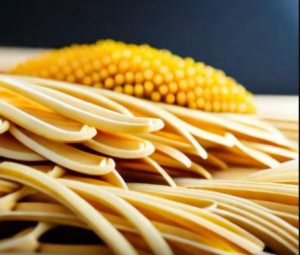Cooking pasta. With so many types of pasta available, it can be hard to know how to cook them all to perfection. Fear not, we’ve got you covered with this complete guide on how to cook pasta with accurate cooking times, and what to pair pasta with. Translation in French: pâtes.
Pasta
How do I cook pasta?
- What amount of pasta should I prepare?
- Preparing pasta
- How to get non sticky pasta
- Cooking pasta
- Cooking dry pasta al dente
- Cooking fresh pasta al dente
- Passive cooking for pasta
What to pair pasta with?
Pair penne, fusilli, or rigatoni with a classic tomato sauce. You can also add meatballs or sausage for a heartier meal. Don’t forget the freshly grated Parmesan cheese! Spaghetti or linguine pair well with oil-based sauces. Try a simple garlic and olive oil sauce with fresh parsley, or a spicy arrabbiata sauce. You can also add sauteed zucchini, sauteed bell peppers, or mushrooms. Fettuccine or pappardelle are great with creamy sauces. Try a classic Alfredo sauce, or add some bacon and peas for a delicious carbonara. Any type of pasta pairs well with pesto. Try a classic basil pesto or switch it up with a sun-dried tomato pesto or a spinach and walnut pesto.
What amount of pasta should I prepare?
2 to 4 ounces of dry pasta (60 to 100 g) per person. See here how to measure that amount with a simple glass.
3 to 5 ounces (70 to 120 g) of fresh pasta per person
4 to 5 ounces (100 to 130 g) of gnocchi per person
4 to 6 ounces (120 to 150 g) of filled pasta (tortellini, ravioli) per person
Preparing pasta
There is no preparation of pasta per se, but the first step to cooking the perfect pasta is to choose the right type of pasta. You want to choose a pasta shape that will hold the sauce well. For example, penne, fusilli, and rigatoni are great for tomato-based sauces, while spaghetti and linguine are better suited for oil-based sauces.
How to get non sticky pasta
How to get non sticky pasta. Boil water, stir while cooking, and, once drained, add a little butter or sauce.
If your pasta is overcooked, they’ll become sticky.
Cooking pasta
Cooking pasta
1. Fill a large pot with water, add a pinch of salt, and bring to a rolling boil. Use about 4-6 quarts of water per pound of pasta.
2. Once the water is boiling, add the pasta and stir to prevent it from sticking together.
3. Cook the pasta according to the package instructions. Make sure to test the pasta for doneness a few minutes before the suggested cooking time. It should be firm to the bite, but not hard.
4. Once the pasta is cooked, drain it in a colander, and toss it with a bit of olive oil to prevent it from sticking together.
Cooking dry pasta al dente
Cooking dry pasta al dente. Here is the cooking time for dry pasta
- Elbow macaroni: 8 minutes
- Fusilli: 5-6 minutes
- Penne: 11-14 minutes
- Macaroni: 8 minutes
- Farfalle: 13-15 minutes
- Spaghetti: 6-7 minutes
- Tagliatelle: 10 minutes
- Angel hair: 3 minutes
- Linguine: 10-12 minutes
- Fettuccine: 10-12 minutes
If you add 30 s to 1 minute, your pasta will be medium-cooked.
Cooking fresh pasta al dente
Cooking fresh pasta al dente. Here is the cooking time for fresh pasta
- Fresh pasta: 4 minutes
- Fusilli: 5-6 minutes
- Farfalle: 2-3 minutes
- Spaghetti: 3-4 minutes
- Angel hair: 30s to 2 minutes
- Linguine: 4-5 minutes
- Fettuccine: 4-5 minutes
- Tortellini: 6-8 minutes
Passive cooking for pasta
Passive cooking for pasta. Want to save money? Cook your dry pasta for 2 minutes in boiling water then cut off the stove, cover and let cook for an additional 20 minutes. Yes, it is substantially longer than planned, but it is way cheaper (and ideal if you like your pasta al dente)
Pasta is believed to have originated in China, where it was made with rice flour as early as 5000 BC. However, the modern version of pasta as we know it today is credited to the Italians. It is said that pasta was brought to Italy by Marco Polo in the 13th century, after his travels to China.
Pasta is made from a simple combination of wheat flour and water, and sometimes eggs are added to create a richer dough. The dough is kneaded and rolled out, then cut into various shapes and sizes. Some types of pasta, like spaghetti and angel hair, are extruded through small holes to create their signature thin, long shape.

